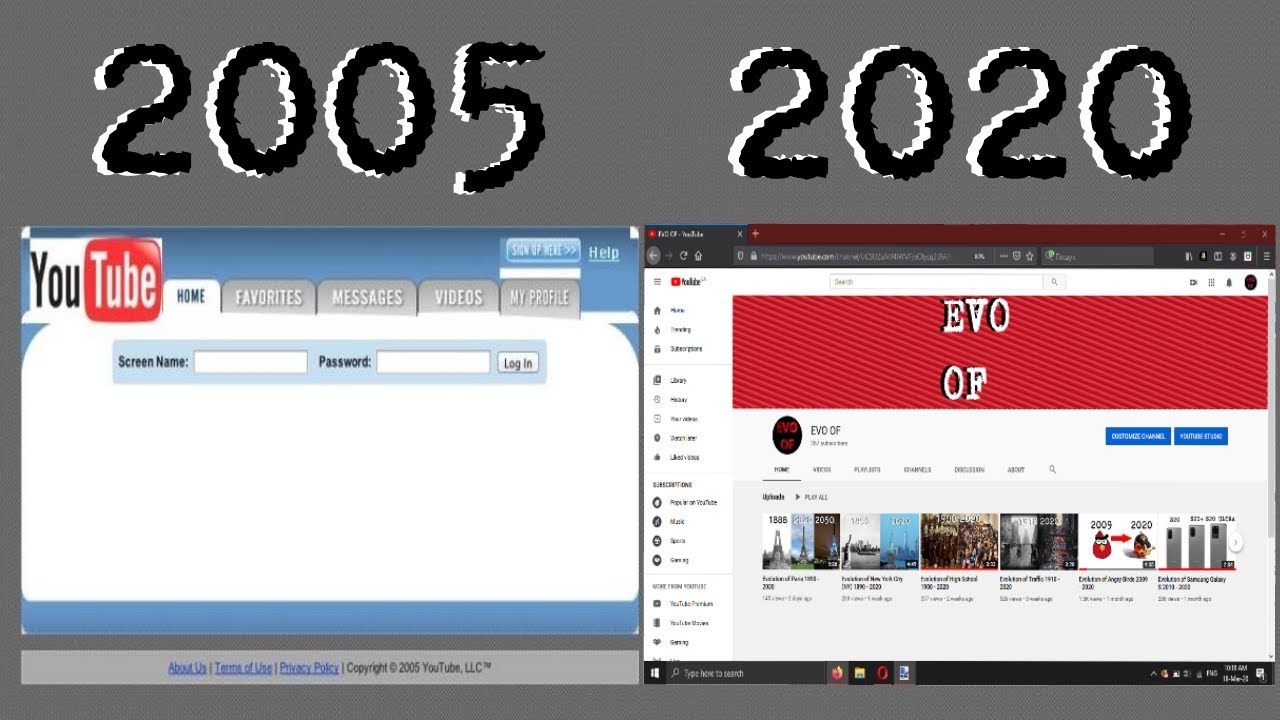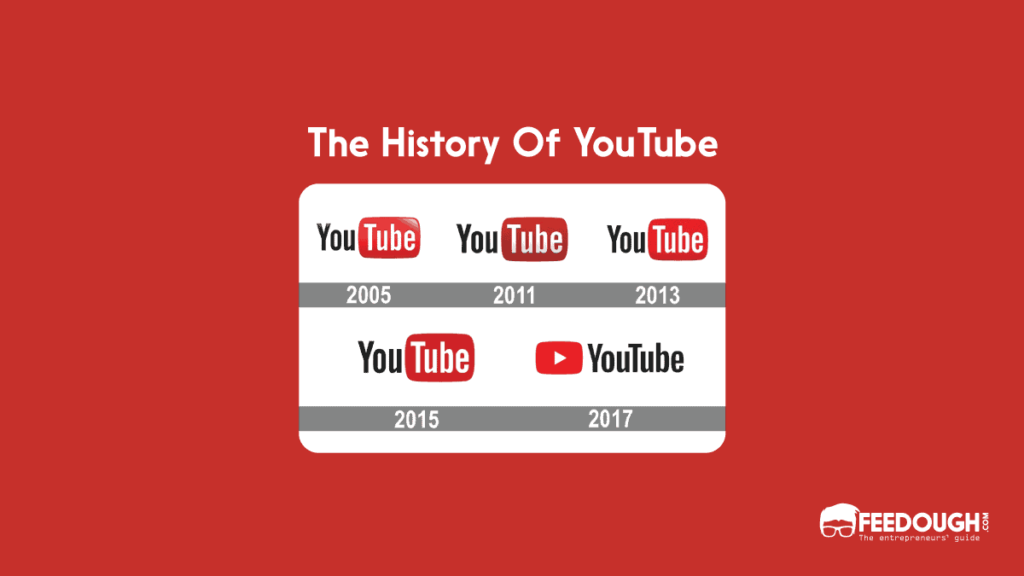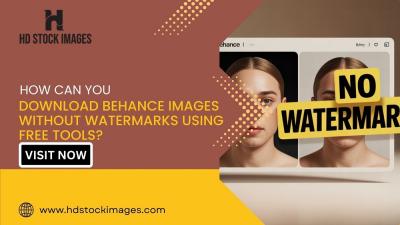YouTube has transformed from a simple video-sharing platform to a powerhouse of digital content, and a significant part of that transformation has been the introduction and evolution of advertisements. From its inception, YouTube has navigated its way through a myriad of changes in advertising strategies, partnerships, and revenue models. Join me as we delve into the history of
The Early Days of YouTube

YouTube was launched in February 2005 by Chad Hurley, Steve Chen, and Jawed Karim. Initially, it was meant to be a platform where users could easily upload, share, and view videos. During its early days, YouTube was ad-free. Can you imagine that? Just a clean slate for users to create and share without being interrupted by ads! It wasn't until November 2005 that
The concept of video advertising was still relatively new back then. However, in 2006, YouTube attracted the attention of Google, which purchased the platform for a whopping $1.65 billion in stock. This acquisition opened up new avenues for monetization. Therefore, in May 2007, YouTube launched its first advertisement program known as the YouTube Partner Program (YPP).
Initially, the platform was focused on plain video ads, marked with a small 'Ad' label, which played before user-generated content. This move was strategic, allowing creators to earn money and incentivizing high-quality content. Here’s a quick timeline of significant events regarding YouTube ads in its early days:
| Year | Event |
|---|---|
| 2005 | YouTube is launched; no ads present. |
| 2006 | Google acquires YouTube. |
| 2007 | YouTube Partner Program is introduced. |
In those formative years, YouTube was truly laying the groundwork for what would become a multi-billion dollar advertising ecosystem, truly changing the way we watch and interact with video content online. Exciting, right?
Introduction of Ads on YouTube

Ah, YouTube—the platform that has completely transformed the way we consume video content. But have you ever wondered when it all began? The introduction of ads on YouTube marked a pivotal moment, changing the entire landscape for creators and viewers alike.
YouTube started as a simple video-sharing site in 2005, but it wasn’t until November 2006, after Google acquired it for $1.65 billion, that the platform began to innovate in terms of monetization. The big move came in 2007 when YouTube rolled out the Partner Program. This program allowed creators to make a little extra cash by placing ads on their videos. Talk about a game-changer!
At first, the ads were fairly simple—mainly banner ads and a few video ads that played before or during content. Creators began to see the potential for income, which led to a surge in high-quality content. As more users flocked to the platform, advertisers recognized an invaluable chance to reach a massive audience.
Fast forward to today, and advertising on YouTube has become an integral part of the experience for users and creators alike. It plays a crucial role in funding creators while offering companies an effective way to market their products. The evolution of YouTube ads didn’t happen overnight, but it certainly changed the course of both the platform and the digital advertising landscape.
Types of Ads: A Breakdown

Now that we know how ads made their debut on YouTube, let’s dive into the different types of ads you might encounter while scrolling through your favorite videos. YouTube has developed various ad formats to match viewers' preferences and advertisers' needs. Here’s a handy breakdown:
| Ad Type | Description |
|---|---|
| TrueView Ads | These are skippable ads that let viewers decide whether they want to watch the ad or skip it after five seconds. It’s a win-win because advertisers only pay when the ad is watched in full. |
| Non-Skippable Ads | As the name suggests, these ads can’t be skipped, requiring viewers to watch the entire duration before they can access the main content. They typically last 15-20 seconds. |
| Bumper Ads | Short but sweet—these are non-skippable ads lasting up to six seconds. They're designed to leave a quick impact! |
| Overlay Ads | These semi-transparent ads appear on the lower part of a video. They’re less intrusive, as viewers can continue watching while the ad is displayed. |
| Display Ads | These ads appear on the right side of the video player on desktop browsers, and they can include text, images, and even videos, all designed to entice viewers. |
Each of these ad types plays a significant role in YouTube's monetization strategy, allowing creators to diversify their income streams while providing a variety of promotional opportunities for brands. Whether you find ads annoying or valuable, they’re undeniably a cornerstone of the YouTube ecosystem.
The Impact of Ads on Content Creators
Since YouTube introduced ads into its platform, the landscape for content creators has significantly transformed. On one hand, the introduction of ads opened new revenue streams for creators, allowing them to monetize their content. On the other hand, it brought along challenges, forcing creators to adapt quickly to the evolving policies and audience expectations.
Positive Impacts:
- New Revenue Streams: With ad placements, creators could earn money directly from their content. This opened doors for many individuals to pursue YouTube as a full-time career.
- Increased Professionalism: As creators began to earn money, many sought to improve their content quality, leading to more professional videos with better production values.
- Diverse Earnings: Beyond just ad revenue, creators started exploring sponsorships, merchandise, and crowdfunding platforms, leading to diversified income sources.
Challenges Faced:
- Adpocalypse Issues: Creators often found themselves at the mercy of YouTube's changing ad policies, leading to unpredictable revenue streams when ads were pulled from certain types of content.
- Pressure to Produce: Increased audience expectations meant that creators felt pressured to upload content frequently, sometimes compromising quality.
- Navigating Audience Preferences: With ads integrated, understanding viewer preferences and balancing monetization with viewer satisfaction became increasingly complex.
Overall, while ads have undoubtedly provided opportunities for many creators, they have also introduced complexities that require careful navigation.
Changes in Advertising Strategies Over the Years
The evolution of advertising strategies on YouTube is intriguing, reflecting broader trends in digital marketing and audience behaviors. Since the start of its ad program, YouTube has iterated on how ads are integrated into content, optimizing for both viewer experience and advertiser satisfaction.
Key Changes Include:
| Year | Advertising Strategy | Description |
|---|---|---|
| 2007 | Introduction of AdSense | Creators could earn revenue through ads contextualized to their content. |
| 2010 | Pre-roll ads | Short video ads were introduced before content, allowing for more predictable ad placements. |
| 2015 | TrueView Ads | Viewers could choose to watch ads or skip them after a few seconds, enhancing viewer control and engagement. |
| 2020 | Product Placement and Brand Integrations | Creators began integrating brands into their content more naturally, blurring the lines between ads and content. |
These changes reflect a broader understanding that advertising needs to be engaging, not disruptive. Advertisers and creators alike are increasingly focused on forming authentic connections with viewers, resulting in strategies that resonate better with their audiences. Overall, the evolution of YouTube advertising reflects its motto: "broadcast yourself," but now with an emphasis on balance between content and commerce.
Current State of YouTube Advertising
As of now, YouTube has evolved into one of the largest and most sophisticated advertising platforms in the world. With billions of active users and countless content creators, it's become a goldmine for marketers looking to reach diverse audiences.
YouTube advertising can be analyzed through various aspects:
- Diverse Ad Formats: YouTube offers a variety of ad formats to cater to different marketing strategies:
- TrueView Ads: These are skippable video ads that allow viewers to choose whether they want to watch them, giving advertisers a chance to only pay for interested viewers.
- Pre-roll, Mid-roll, and Post-roll Ads: These non-skippable ads provide opportunities to place messages right before, during, or after videos.
- Bumper Ads: These are short, six-second ads that can be an effective way to deliver quick brand messages.
- Targeting Capabilities: YouTube's targeting options have expanded significantly, allowing advertisers to reach audiences based on demographics, interests, and specific behaviors. This granular targeting ensures better ROI for campaigns.
- Integration with Google Ads: Being integrated with Google Ads, YouTube provides advertisers with seamless access to sophisticated analytics and measurement tools. This means you can track campaign performance and optimize them in real time.
The current landscape of YouTube advertising isn't just about broad reach; it's about strategic engagement. Brands are increasingly focusing on creating authentic connections with their audiences, often collaborating with creators to craft narratives that resonate. Overall, YouTube advertising has become complex yet incredibly impactful, transforming how brands communicate in the digital space.
Conclusion
To wrap it all up, YouTube's journey in advertising has been nothing short of remarkable. From its humble beginnings with basic ads to its current state as a leading advertising platform, YouTube has constantly adapted to meet the needs of both advertisers and users. It's a reflection of changing media consumption habits and the evolving landscape of digital marketing.
As we've seen:
- YouTube started showing ads back in 2006, quickly embedding itself into the fabric of content consumption.
- The introduction of various ad formats has given brands the freedom to choose how to engage with their audiences effectively.
- Advanced targeting and integration with Google Ads have made campaign management smarter and more efficient.
Looking ahead, it’s clear that YouTube will continue to innovate its advertising solutions, perhaps integrating advancements like AI and AR to create even more immersive experiences. For marketers and creators alike, understanding this platform and its advertising evolution is crucial for navigating the ever-changing digital landscape. Whether you're a small business trying to make a mark or a large brand aiming for broader impact, leveraging YouTube advertising effectively can propel your strategy to new heights.
 admin
admin








